1. Illinois
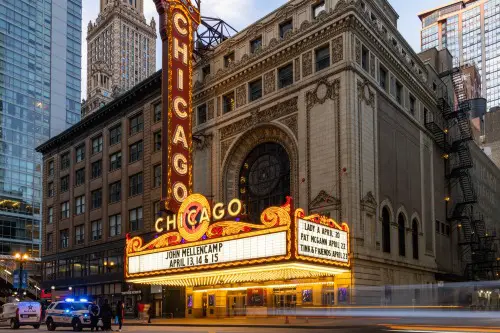
Illinois has long been an economic battleground, with high taxes and a struggling state budget creating challenges for both residents and prospective homeowners, according to Illinois Policy. While Chicago is one of the nation’s largest cities, with a significant population and economy, the state’s overall economic decline has led to a stagnant real estate market in many areas. Over the past decade, Illinois has seen a population exodus, with many people relocating to states with lower taxes and more affordable housing markets. This migration has further contributed to the difficulties of purchasing a home in Illinois, as demand for housing remains low in many rural and suburban areas.
Additionally, Illinois’ high property taxes are a major deterrent for homebuyers. Property tax rates in the state are among the highest in the country, with some counties having rates that make it difficult for homeowners to afford their property. High taxes, combined with economic uncertainty, create an environment where potential buyers are hesitant to commit to purchasing a home. Furthermore, many areas in Illinois, especially in Chicago, are facing issues like rising crime rates and decaying infrastructure, which make homeownership less appealing. As a result, Illinois remains one of the most challenging places to buy a home in 2025.
2. Louisiana
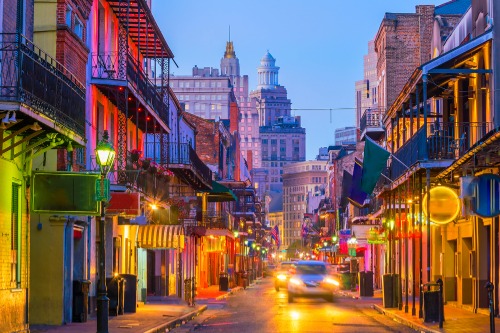
Louisiana’s real estate market is heavily impacted by its vulnerability to climate change, particularly hurricanes and flooding. New Orleans and Baton Rouge, two of the state’s largest cities, face constant threats from these natural disasters, which cause massive damage to homes and infrastructure. As a result, home insurance premiums in Louisiana are some of the highest in the nation. For many, this added expense makes homeownership unaffordable, according to the Louisiana Illuminator. Even though Louisiana has a relatively low cost of living, the added risk of environmental damage and the high insurance premiums make it a difficult state for prospective buyers to navigate.
Moreover, Louisiana’s economy has struggled with a lack of diversification, making it less attractive to out-of-state buyers and investors. The state is heavily reliant on oil and gas industries, and fluctuations in the price of these commodities can significantly impact the job market and local economy. As job prospects fluctuate, so does the stability of the housing market. Many areas of the state face stagnation in property values, and while homes may be available at lower prices, the lack of economic opportunity can make homeownership seem like a less viable long-term investment.
3. New Jersey

New Jersey is another state where homeownership has become increasingly difficult, largely due to high property taxes and limited housing inventory, according to SmartAsset. Even though New Jersey is home to many affluent suburban communities, the state’s high property taxes make homeownership challenging for middle-class families. Taxes in New Jersey are among the highest in the country, and this burden continues to rise, placing significant pressure on homebuyers. Additionally, the state’s proximity to New York City means that many people are moving to New Jersey for its relative affordability compared to the city. However, this migration has driven up housing prices, particularly in desirable suburban areas.
Despite its prime location and relatively high median household income, the state faces numerous challenges. Major cities like Newark and Jersey City have seen significant gentrification, further pushing up home prices. While there is demand for housing, the inventory simply isn’t there, and properties sell at a premium. Many residents are finding themselves priced out of the market, especially first-time buyers. New Jersey’s high cost of living, combined with a heavy tax burden, creates an environment where homeownership is increasingly out of reach for many.
4. California

California continues to be one of the most difficult states to buy a home, especially in cities like Los Angeles, San Francisco, and San Diego. The median home price in California consistently outpaces national averages, according to the Legislative Analyst’s Office, and in 2025, this trend shows no signs of slowing down. High home prices have become a norm here, making it nearly impossible for many potential buyers, particularly first-time buyers, to break into the market. Part of the problem lies in the fact that demand is extremely high, while inventory remains low, exacerbating competition and driving up prices.
However, it’s not just the high prices that make California challenging for homebuyers. The state’s stringent environmental regulations limit new construction, especially in desirable coastal areas. Zoning laws that protect natural landscapes, along with a lack of available land, contribute to the scarcity of new homes on the market. As if that weren’t enough, the cost of living in California is sky-high. Utilities, groceries, and healthcare can take a huge chunk of an individual’s income, leaving little room for savings to purchase a home. Even with some relief in mortgage rates or slight dips in pricing, the state’s housing market remains locked in an affordability crisis, making it an incredibly tough place to buy a home in 2025.
5. Hawaii

Hawaii is notorious for its sky-high housing costs, and this trend has only been intensifying in recent years, according to the Grassroot Institute of Hawaii. With limited land for new construction and the island state’s heavy reliance on tourism and the military economy, Hawaii’s real estate market faces both upward price pressure and minimal availability. Many of the state’s cities, such as Honolulu, have seen explosive growth in property values, with demand far outpacing supply. As a result, the median price for homes in Hawaii regularly exceeds $700,000, leaving many families struggling to afford a home.
One of the major obstacles to buying a home in Hawaii is the extremely limited land supply. Because Hawaii is made up of several islands, there are only so many places where development can occur. Strict building codes and preservation efforts to protect the environment, wildlife, and cultural heritage mean that land is even more restricted. Additionally, while wages in Hawaii have risen somewhat, they haven’t kept pace with the rising costs of living, including housing. This imbalance makes it difficult for locals to buy homes, let alone out-of-state buyers, who also contribute to the increasing demand. With the situation unlikely to change in the near future, Hawaii remains a tough place to purchase a property.
6. New York

New York, particularly the New York City metropolitan area, has long been known for its steep real estate prices, but the situation in 2025 is particularly dire for would-be homebuyers. In New York City, the average home price hovers around $1 million, making it incredibly difficult for many residents to purchase homes without resorting to significant debt or financial backing. While home prices in more rural and suburban areas of New York are relatively more affordable, the competition is still fierce. Even in places like Long Island and upstate New York, bidding wars are common, and affordable housing is in short supply.
What complicates things further is New York’s notoriously high property taxes. Combined with the high cost of living in the state, homeownership is simply out of reach for many, especially those who don’t already own property. The cost of living in New York City is especially burdensome for potential buyers, given the combination of high rent, utilities, and everyday living expenses. For those hoping to buy a home in the city or nearby, the challenge is compounded by competition from developers who often buy properties, renovate them, and turn them into luxury apartments—further pushing up housing prices and making them inaccessible for many families and first-time buyers.
7. Colorado

Colorado has become one of the most expensive states to buy a home in 2025. Denver, Boulder, and Colorado Springs are experiencing a surge in demand, driven by an influx of tech workers and remote workers from across the nation. The state’s booming economy, coupled with its attractive lifestyle options—such as hiking, skiing, and a burgeoning job market—has led to an extremely competitive real estate environment. As a result, housing prices have escalated over the past few years, making it challenging for new buyers to afford homes, especially when compared to other parts of the country.
The high demand in Colorado is exacerbated by the state’s limited housing inventory. Although new homes are being built, they are often at higher price points due to rising construction costs, such as lumber and labor. With the added challenge of low-interest rates, the demand for housing continues to outstrip supply. Additionally, Colorado’s appeal as a destination for people seeking both outdoor activities and a strong job market has led to many real estate investors purchasing properties to rent out or sell at a profit, further reducing the number of homes available to first-time buyers. As a result, it’s increasingly difficult to find affordable options in both urban and suburban areas.
8. Florida
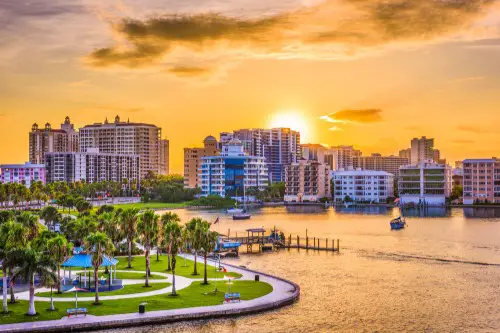
Florida’s housing market has been on fire in recent years, making it increasingly difficult for residents to buy homes, especially in cities like Miami, Orlando, and Tampa. The state’s booming population, spurred on by both domestic migration and international buyers, has fueled significant demand for homes. Additionally, Florida has become a popular destination for retirees, further driving up competition. In 2025, home prices have continued to increase year over year, with some areas seeing median home prices above $350,000—far beyond what many working-class buyers can afford.
Another key factor in Florida’s housing crisis is the state’s vulnerability to natural disasters, particularly hurricanes. As climate change continues to intensify the frequency and severity of these storms, homeowners face rising costs in insurance premiums and property protection. These higher costs make homeownership even less attainable for many. Furthermore, high property taxes and rising utility bills in certain parts of the state further strain homeowners’ ability to afford a house. Even though Florida offers no state income tax, the other expenses associated with homeownership continue to climb, making it a difficult place to purchase a home in 2025.
9. Massachusetts
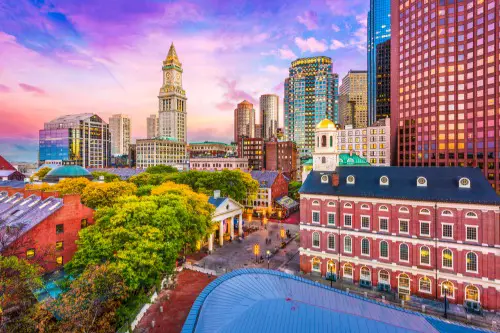
Massachusetts, particularly the Greater Boston area, is known for its steep housing costs, and 2025 is no different. The average home price in Boston has consistently ranked among the highest in the nation, making it extremely difficult for first-time buyers and even seasoned buyers to afford homes in this area. The demand for homes is intense due to the city’s thriving economy, which is supported by the tech, education, and healthcare sectors. This has led to a supply-demand imbalance where there simply aren’t enough homes on the market to meet the growing demand.
In addition to the high prices, Massachusetts’ property taxes also add to the challenge. The state has some of the highest property taxes in the nation, and this, combined with high utility costs, makes homeownership a financial burden for many. Furthermore, strict zoning laws and building regulations restrict new construction, particularly in the most desirable neighborhoods, which only adds to the affordability problem. Massachusetts also faces the challenge of gentrification in urban areas, as wealthy buyers move into previously affordable neighborhoods, displacing long-time residents and pushing up property values. As a result, prospective homebuyers in Massachusetts are often faced with limited options and soaring costs, creating a market that is nearly impossible to enter.
10. Nevada
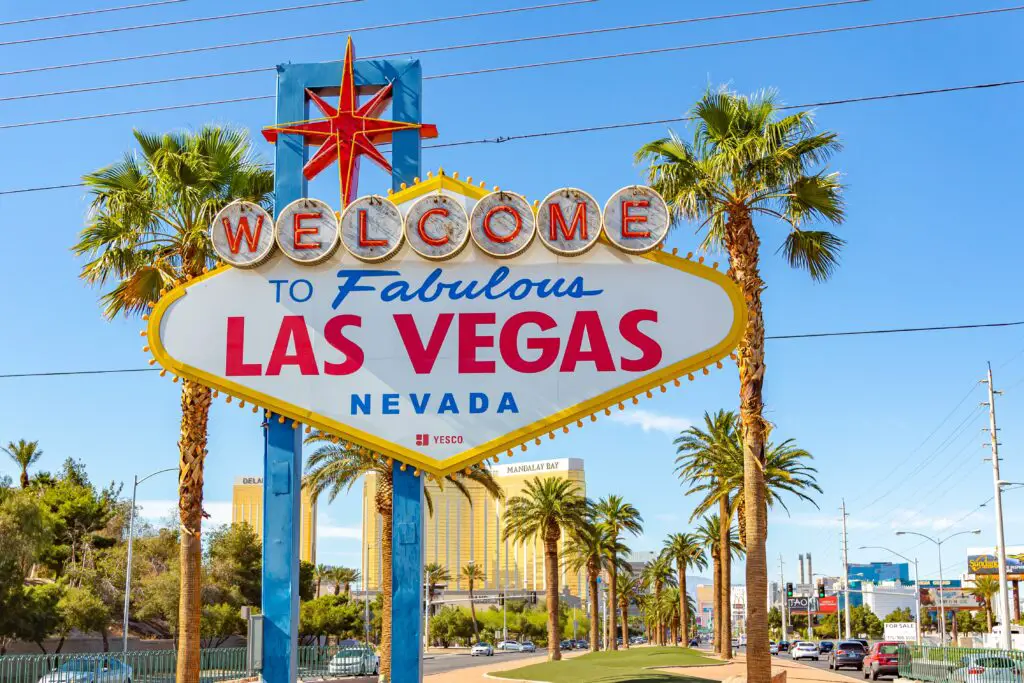
Nevada’s real estate market has been marked by dramatic price increases in recent years, particularly in Las Vegas. The city has seen significant population growth due to an influx of residents seeking a lower cost of living compared to other major U.S. cities. However, while housing prices are still lower than places like California or New York, they have been rising rapidly. In 2025, it’s not uncommon to see the average home price in Las Vegas reach upwards of $400,000, which is a considerable jump from just a few years ago. With the rising prices, many local buyers are finding themselves priced out of the market.
Another issue contributing to the challenge of buying a home in Nevada is the state’s economic volatility. While Nevada has experienced a strong post-pandemic recovery, much of its economy relies heavily on tourism and entertainment, which can be unpredictable. The state’s relatively low taxes and business-friendly environment have attracted many investors, but this also means that much of the housing stock is purchased by corporations or real estate investment trusts (REITs) who rent properties out rather than sell them to individual buyers. This investor-driven market reduces the availability of homes for those who want to buy to live in. As demand increases and inventory stays low, Nevada’s housing market remains increasingly difficult for buyers in 2025.
11. Washington

Washington state, particularly Seattle, has become one of the most difficult places to buy a home in recent years. The Seattle metropolitan area, home to major companies like Amazon and Microsoft, has seen its real estate prices skyrocket, and 2025 is no exception. The average price for a home in Seattle has now surpassed $800,000, and it continues to climb. High-paying tech jobs and a strong economy have led to an influx of highly educated professionals into the area, further driving up demand for homes. Unfortunately, this influx has far outpaced the supply of homes available for sale.
Moreover, Washington state has a highly competitive housing market where multiple offers and bidding wars are the norm. Many homes sell for well above asking price, especially in desirable neighborhoods like Capitol Hill, Queen Anne, and Ballard. In addition to the high prices, Washington has relatively high property taxes, which further complicate the purchasing process for first-time buyers. The state’s rapid population growth and a lack of available land for new construction only make matters worse, with zoning laws limiting the types of homes that can be built in certain areas. As a result, many prospective homeowners are either being priced out or finding themselves in bidding wars that make the market almost inaccessible for all but the wealthiest buyers.
12. Arizona
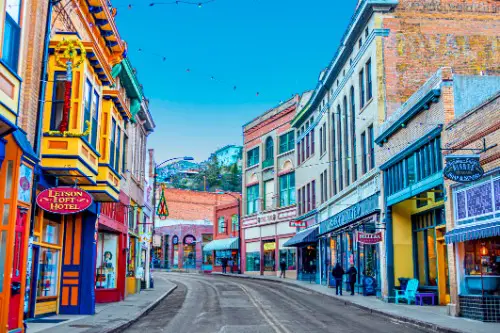
Arizona, particularly cities like Phoenix and Scottsdale, has seen explosive growth in its housing market over the past decade. In 2025, the market remains a tough one for potential buyers, especially first-timers. Phoenix, which has long been a popular destination for retirees and people moving from more expensive states like California, is now dealing with a massive influx of residents from all over the country. This population boom has led to skyrocketing demand for housing and soaring home prices, making it extremely difficult for many to find affordable options.
The demand for homes in Arizona is also fueled by the state’s relatively low property taxes and warm climate, which attract both retirees and remote workers. However, Arizona’s real estate market has become increasingly competitive, with many homes selling for well over asking price. In addition, the state’s expanding tech industry has brought in even more high-income professionals, further driving up demand. While some areas still have relatively low-priced housing compared to other states, the limited inventory, coupled with rising construction costs and a growing population, makes it increasingly difficult for buyers to find affordable homes. As a result, Arizona has become one of the most challenging states for homebuyers in 2025.
13. Texas

Texas has long been considered a relatively affordable state for homebuyers, but 2025 has proven to be a challenging year for prospective homeowners. While Texas cities like Austin, Dallas, and Houston still offer lower home prices compared to places like California or New York, the market has become increasingly competitive in recent years. Austin, in particular, has seen its housing prices skyrocket, largely due to its booming tech industry and a flood of residents relocating from more expensive cities. As a result, home prices in Austin have risen by nearly 30% over the past few years, creating a major barrier to homeownership for many.
The increased demand in Texas can also be attributed to the state’s strong job market and business-friendly environment. With many companies relocating to Texas, the influx of highly-paid professionals has put upward pressure on home prices. However, much like other fast-growing states, Texas struggles with inventory shortages. The state’s rapid growth has led to a housing supply crunch, and while builders are trying to keep up, the pace of new home construction hasn’t kept up with the demand. This imbalance has created bidding wars, higher prices, and a more competitive market overall, making it harder for buyers to secure affordable homes.
14. Oregon

Oregon, particularly Portland, has seen a steep rise in housing prices in recent years, making it one of the most challenging states for homebuyers in 2025. Portland has long been an attractive destination for people seeking a more relaxed lifestyle in the Pacific Northwest, and this has contributed to increasing demand. However, with demand outpacing supply, home prices have surged, and many would-be homeowners are left scrambling for affordable options.
The state’s growing population, combined with a lack of available land for new construction, has only made things worse. Oregon’s strict zoning and land-use regulations, while well-intentioned in terms of preserving the natural environment, have made it difficult to build enough new homes to meet demand. As a result, homes in popular areas around Portland are often sold for well over asking price, and bidding wars are common. Additionally, high property taxes and rising insurance premiums due to the state’s vulnerability to wildfires and floods further push homeownership out of reach for many residents. For potential buyers in Oregon, the dream of owning a home feels increasingly out of touch in 2025.


